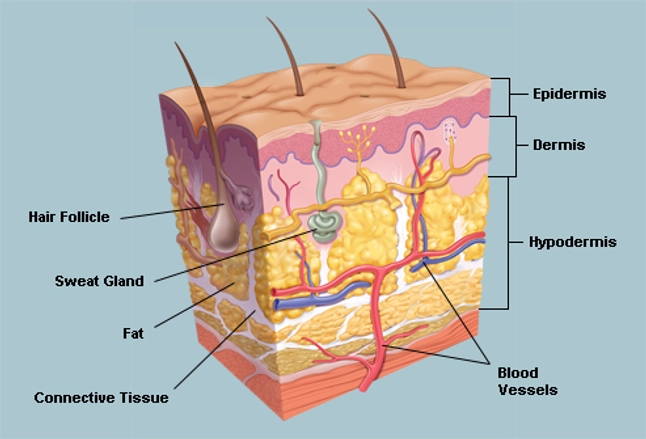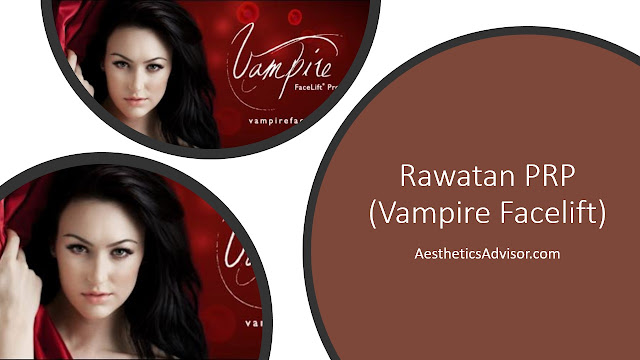Aesthetics 101 (Part 1): Aesthetic Medicine Course for Layman, Beauticians, Aestheticians and Nurses
Why a guide on aesthetic medicine? During the last decade we have seen a tremendous increase in the number of medical aesthetic treatment methods and technologies and a parallel increase in our knowledge about them. However, aesthetic related treatments and products are often accompanied by marketing myths rather than good scientific data; often indistinguishable by a layperson.
This course is designed to cover the practical essentials of aesthetic services provided by an aesthetic clinic . The main goal for this course is to guide you as a consumer in making the right and safe decision in terms of choosing the right treatment method as well as the right practitioner. However, this guide is also suitable for nurses, paramedical and certified aestheticians and beauticians who are keen to develop or advance their knowledge in aesthetic medicine in order address the knowledge gap between medical doctors trained in medical aesthetics and their non-medical doctor colleagues i.e. beauticians, laser therapists etc.
This post contains information and links to course modules and resources in various medical aesthetic related categories. As aesthetic medicine is a dynamic and ever changing field, this list is a work-in-progress list as new categories and modules might be added from time to time.
Although information related to medical aesthetics is all over the internet, some are too technical for a lay person, some are too shallow without any substance and some are disorganized, confusing you further. We have tried to organize them in a structured manner so that you could digest the information in an orderly manner.
Course Structure:
Introduction to Human Anatomy related to Aesthetics
'Human Anatomy' is a one semester subject in medical school but we are not going to dive into irrelevant technicalities.
For a more comprehensive TLTR review on this subject matter, feel free to check out the human body from Wikipedia.
"Human Anatomy" refers to the study of the human structure. Knowing the physical structure of the human body inside out is essential, especially for a plastic surgeon.
In order to know 'where' to cut, how deep to cut and 'what' not to cut, the plastic surgeon has to know not only the external structure but also the internal structure and most importantly the relationship of one part to another. That's not easy, if you know what I mean. One needs to know as well, the meaning of specific terms. Such understanding is essential before we move on to other topics later.
Let us begin with the most basic structure of the body, the 'cells'. Since the microscope was first invented, cell studies were made possible. Simple life forms e.g. the amoeba, is a one-cell life form.
With the invention of more powerful tools, we can now studying human cells at the molecular level. Every human cell contains DNA, which is like the 'master software blueprint' of a computer system.
Easy?
From the micro (small) level, we now move on to the macro (big) level. A group of cells is referred to as 'tissue', and a group of different tissue is referred to as an 'organ'; and a group of organs with a specific function is referred to as a 'system'.
In terms of the subject matter, what is most relevant here in terms of aesthetics, would be the skin.
Different aesthetic related equipments target different layer of the skin. Thus, the reason why there are many types of lasers i.e. Yag, FCO2 etc. Some aesthetic technology goes deeper than others. HIFU (high intensity focused ultrasound) for example, targets the SMAS (superficial muscular aponuerotic system) as shown below.

Why is it important for you to know?
So that you could communicate correctly with your doctor and it will also help you to narrow down the possible causes of your problem. If you are conversing with your doctor over the phone or whatsapp, knowing the exact location of your face and your physical body is important e.g. chin, cheek, upper arm, outer thigh, hip area etc.
This is a work-in-progress course. We will start to write and publish the content as soon as possible. Please bookmark this url and come back regularly for updates.
For more information, please feel free to contact us.
Course Structure:
This post contains information and links to course modules and resources in various medical aesthetic related categories. As aesthetic medicine is a dynamic and ever changing field, this list is a work-in-progress list as new categories and modules might be added from time to time.
Although information related to medical aesthetics is all over the internet, some are too technical for a lay person, some are too shallow without any substance and some are disorganized, confusing you further. We have tried to organize them in a structured manner so that you could digest the information in an orderly manner.
Course Structure:
- Part 1: Aesthetic Medicine Course for Layman, Beauticians, Aestheticians and Nurses
- Part 2: Basic Science for Aesthetics: Human Physiology, Pathology, Biochemistry, Microbiology & Pathology
- Part 3: The 6R's of Aesthetics
- Part 4: Introduction to LASER, Laser Types and Indications
- Part 5: Introduction to HIFU (High Intensity Focused Ultrasound
- Part 6: Introduction to Body Contouring Medical Devices
Introduction to Human Anatomy related to Aesthetics
 |
| Image credit: Dr Ben Chan, Cosmetic Institute of Australia |
For a more comprehensive TLTR review on this subject matter, feel free to check out the human body from Wikipedia.
"Human Anatomy" refers to the study of the human structure. Knowing the physical structure of the human body inside out is essential, especially for a plastic surgeon.
In order to know 'where' to cut, how deep to cut and 'what' not to cut, the plastic surgeon has to know not only the external structure but also the internal structure and most importantly the relationship of one part to another. That's not easy, if you know what I mean. One needs to know as well, the meaning of specific terms. Such understanding is essential before we move on to other topics later.
Let us begin with the most basic structure of the body, the 'cells'. Since the microscope was first invented, cell studies were made possible. Simple life forms e.g. the amoeba, is a one-cell life form.
With the invention of more powerful tools, we can now studying human cells at the molecular level. Every human cell contains DNA, which is like the 'master software blueprint' of a computer system.
Easy?
From the micro (small) level, we now move on to the macro (big) level. A group of cells is referred to as 'tissue', and a group of different tissue is referred to as an 'organ'; and a group of organs with a specific function is referred to as a 'system'.
Remember:
- THE MOST BASIC PART OF THE BODY = CELL
- GROUP OF CELLS = TISSUE
- GROUP OF TISSUE = ORGAN
- GROUP OF ORGANS = SYSTEM (e.g. cardio-vascular system)
In terms of the subject matter, what is most relevant here in terms of aesthetics, would be the skin.
 |
| Image credit: WebMD |
The skin is the largest organ of the body, with a total area of about 20 square feet. The skin protects us from microbes and the elements, helps regulate body temperature, and permits the sensations of touch, heat, and cold.
Skin has 3 basic layers:
- The epidermis, the outermost layer of skin, provides a waterproof barrier, creates our skin tone and acting as a barrier to keep bacteria out.
- The dermis, beneath the epidermis, contains tough connective tissue, hair follicles, and sweat glands.
- The deeper subcutaneous tissue (hypodermis) is made of fat and connective tissue.
Different aesthetic related equipments target different layer of the skin. Thus, the reason why there are many types of lasers i.e. Yag, FCO2 etc. Some aesthetic technology goes deeper than others. HIFU (high intensity focused ultrasound) for example, targets the SMAS (superficial muscular aponuerotic system) as shown below.
Knowing the layers of the skin is also important for the aesthetic doctor in order to ensure that the filler or botox is injected into the right layer of the skin.

So that you could communicate correctly with your doctor and it will also help you to narrow down the possible causes of your problem. If you are conversing with your doctor over the phone or whatsapp, knowing the exact location of your face and your physical body is important e.g. chin, cheek, upper arm, outer thigh, hip area etc.
This is a work-in-progress course. We will start to write and publish the content as soon as possible. Please bookmark this url and come back regularly for updates.
For more information, please feel free to contact us.
Course Structure:
- Part 1: Aesthetic Medicine Course for Layman, Beauticians, Aestheticians and Nurses
- Part 2: Basic Science for Aesthetics: Human Physiology, Pathology, Biochemistry, Microbiology & Pathology
- Part 3: The 6R's of Aesthetics
- Part 4: Introduction to LASER, Laser Types and Indications
- Part 5: Introduction to HIFU (High Intensity Focused Ultrasound
- Part 6: Introduction to Body Contouring Medical Devices
Find a Clinic:











Comments
Post a Comment